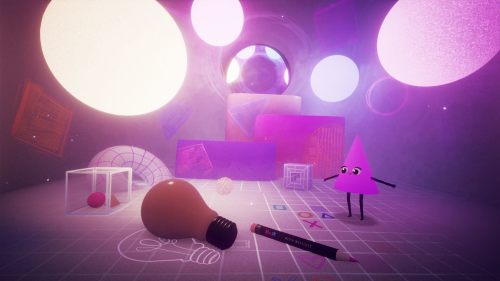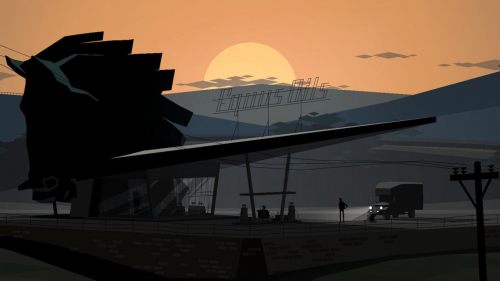Fantastic Arcade: Hands On With SUPER HYPERCUBE On PlayStation VR
Tucked away upstairs in the Alamo Drafthouse's Highball bar are a bunch of totally rad karaoke rooms. During Fantastic Fest, they’re used for karaoke, sure, but also for press interviews and the like. And this this year, the Fifth Dimension room was converted - for two hours a day - into a demo venue for one of the many unique games at Fantastic Arcade: Super Hypercube for the PlayStation VR.
Super Hypercube plays like an alternate-universe Tetris. You control a cluster of cubes flying through space towards a series of walls, each of which has a hole in the middle. It’s up to you to rotate (in three dimensions) your cube-cluster to fit through that hole before it’s too late. As your cluster grows from its 1x1 starting point to strangely-shaped conglomerations, it becomes exponentially more difficult to align your cluster with the upcoming hole. This is a game that requires VR in order to work: not only does looking around your cluster give you a clearer idea of its makeup, but it’s vital to lean around your cluster to even see what hole you have to fit it into.
Despite technically being a launch title for the PlayStation VR (fka Project Morpheus), Super Hypercube has actually been around in various forms since 2008. It was first developed by Montreal-based development collective Kokoromi as part of its Gamma indie game showcase - specifically, one intended to highlight innovative uses of 3D in games. That incarnation played in red/blue anaglyphic 3D, using a DIY head-tracking technique that employed a Wii controller. It’s come a long way since then, adding VR support, full neon-tinged colour, and a lot of gameplay streamlining. There’s also still some ways to go, which was a particularly intriguing part of my short demo.
There is only one game mode in Super Hypercube, and it is called Super Hypercube. It’s a “pure” score attack game in that there are no difficulty choices or game modes - all scores will be directly comparable to all other scores, with none of the fragmentation that plagues many similar games. One of the challenges Kokoromi is facing is how to maintain a pure score attack structure while keeping the challenge up for experienced players, for whom the start of each game can currently be somewhat boring. Test players have also managed to break the game using its own mechanics, like gaming the cube-drop system to create flat clusters; smart choices have been made to curb such borderline cheating. By the time it’s done, Super Hypercube should be fun for players, competitors, and spectators alike.
Super Hypercube is intended to be a launch title for the PlayStation VR (with other VR devices to follow*), which is itself intended to release sometime in 2016. My demo gave me confidence not only in the hardware and the game itself, but in the broad possibilities that VR games can explore. It may well be that the “killer app” of the tech is not even a first-person or “realistic” game at all, but something along these lines: using VR as a key game mechanic.
* Including the HTC/Valve Vive, which the developers described as a “religious experience." They also described it as “the price of a small car,” though, so for now, PSVR may be a safer bet.



